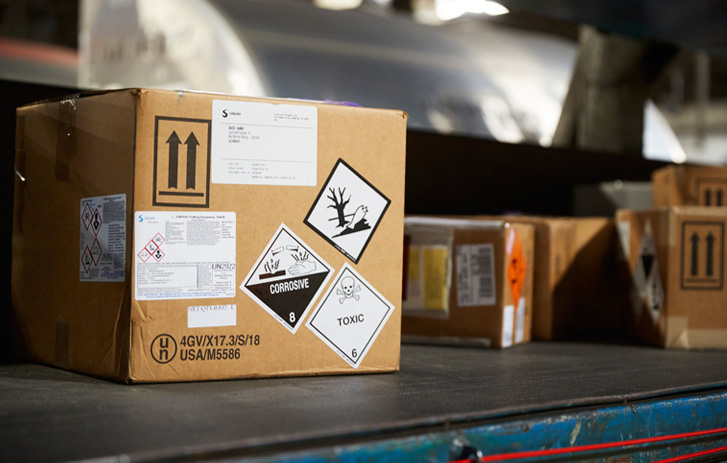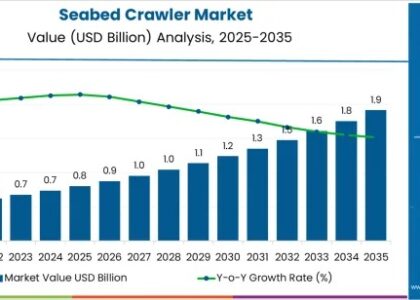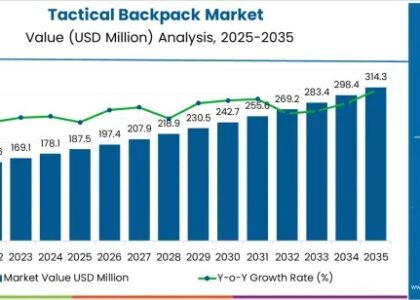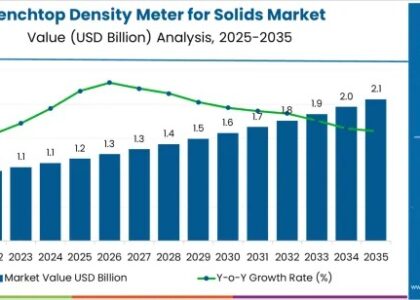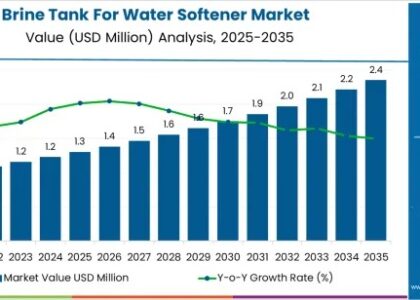In 2023, the global hazardous goods packaging market is poised to reach a market value of US$ 11.32 billion, with further growth forecasted to drive its valuation to US$ 19.4 billion by 2033, showcasing a Compound Annual Growth Rate (CAGR) of 5.5% throughout the forecast period. This growth is attributed to stringent regulations governing the safe transportation and handling of hazardous materials across various industries, driving the demand for robust and compliant packaging solutions. Additionally, increasing concerns regarding environmental safety and risk mitigation are prompting industries to invest in innovative hazardous goods packaging technologies, driving market expansion globally.
The hazardous material handling team needs trained personnel especially to handle dangerous goods that comprise materials that are flammable, pathogenic, oxidizing, corrosive, explosive, allergic, toxic, biohazardous, radioactive.
North America is expected to dominate the hazardous goods packaging market by accumulating over 44% market share by end of the forecast period. The growing population in the United States is augmenting the demand for oil which is creating a demand for hazardous packaging materials. Furthermore, large-scale petrochemical initiatives have reduced the demand for gasoline, aiding the product demand. The booming petrochemical industry in the United States has inevitably fuelled demand for transportation services to move hazardous oil & gas and chemicals.
Request Sample Report: https://www.futuremarketinsights.com/reports/sample/rep-gb-13385
The Europe hazardous goods packaging market is experiencing significant growth Road transport is the key mode of transport of hazardous goods in Europe. According to the Eurostat database, in 2017, the transport of hazardous goods in the Europe more than 83 billion tonne-kilometres. European countries such as Germany, France, and Poland have highest share of hazardous material road transportation 27.5%, 17.8%, 8.7% respectively.
Market Drivers:
- Stringent Regulations: Increasing regulations regarding the safe transportation and handling of hazardous materials drive the demand for specialized packaging solutions. Compliance with regulations such as those outlined by the United Nations Recommendations on the Transport of Dangerous Goods (UNRTDG) and regional regulatory bodies fuels the market growth.
- Growing Chemical Industry: The expansion of the chemical industry, including petrochemicals, pharmaceuticals, and industrial chemicals, necessitates robust packaging solutions to ensure the safe transport and storage of hazardous substances. This growth in the chemical sector directly boosts the demand for hazardous goods packaging.
- Rising Concerns for Worker Safety: Heightened awareness of workplace safety and environmental protection underscores the importance of proper hazardous goods packaging. Companies are increasingly investing in high-quality packaging solutions to mitigate risks associated with handling and transporting hazardous materials, thereby safeguarding workers and the environment.
- Globalization of Trade: The globalization of trade has led to an increase in the cross-border movement of hazardous materials. This trend drives the need for standardized and reliable packaging solutions that can withstand varying environmental conditions during transit, contributing to market growth.
- Technological Advancements: Continuous advancements in packaging technologies lead to the development of innovative solutions that enhance the safety and efficiency of hazardous goods packaging. Features such as barrier protection, tamper-evident seals, and tracking systems improve the integrity and traceability of packaged materials, driving market demand.
Market Restraints:
- Cost Constraints: High costs associated with specialized hazardous goods packaging materials and manufacturing processes can act as a barrier to market growth. Companies may face challenges in balancing the need for safety and compliance with cost considerations, particularly in industries with narrow profit margins.
- Complexity of Regulations: The complexity and variability of regulations governing the packaging and transportation of hazardous materials pose challenges for manufacturers and logistics providers. Compliance with diverse regulatory frameworks across different regions requires significant resources and expertise, potentially hindering market expansion.
- Environmental Concerns: While hazardous goods packaging is essential for safety and regulatory compliance, certain materials used in packaging may have adverse environmental impacts. Increasing scrutiny of packaging materials and their disposal, coupled with a growing emphasis on sustainability, could drive demand for eco-friendly alternatives and pose challenges for traditional packaging manufacturers.
- Logistical Challenges: Handling and transporting hazardous materials present logistical challenges, including the need for specialized storage facilities, transportation equipment, and trained personnel. Complex supply chain requirements and the risk of accidents or regulatory non-compliance during transit can deter companies from dealing with hazardous goods, impacting market growth.
- Risk of Material Incompatibility: Certain hazardous materials may react unpredictably with packaging materials, leading to integrity breaches or safety hazards. Ensuring compatibility between packaged goods and packaging materials requires careful consideration and testing, adding complexity and potential risks to the packaging process.
Competitive Landscape Analysis
The market survey conducted by FMI offers key trends and challenges in the packaging industry and its consequent impact of Hazardous Goods Packaging market. The survey provides a thorough market share analysis to offer an in-depth analysis of prevailing competition.
It also provides a list of leading players and recent development in the global Hazardous Goods Packaging market. Some of the players in the global Hazardous Goods Packaging market are
- NEFAB GROUP
- Pfizer Inc.
- THIMM THE HIGHPACK GROUP.
- Eagle Manufacturing Company
- Schutz Container Systems, Inc.
- HINRICH Industries
- Mauser Group B.V.
- others
Key Takeaways and Projections
- The U.S. is expected to lead the North America Hazardous Goods Packaging market, projecting the fastest growth in the region between 2023-2033
- Germany and the U.K. are expected to, collectively, hold the largest share in the Europe market over the assessment period.
- China will dominate the East Asia market, accounting for the largest demand share during the forecast period.
- India is expected to emerge as a highly remunerative market in South Asia, contributing the significant revenue share in the region through 2033.
Recent Developments-
- In 2021, NEFAB Group AB bought Reflex Packaging Group, the world’s leading producer of sustainable thermoformed cushioning, to further bolster their commitment to saving resources in supply chains. Reflex Packaging will continue to operate as separate bodies within the NEFAB Group.
- In September 2021, Mauser Group announced an investment of a significant amount in cutting-edge machinery to increase the production capacity of plastic drums and IBCs at its facility in Gebze, Turkey. The expansion of the site will also support customer growth strategies and offer additional support for the growing export markets in the Middle East and Eastern Europe.
Buy Now/Purchase: https://www.futuremarketinsights.com/checkout/13385
Market Segmentations:
By Product:
- Drums
- IBCs
- Flexitanks
- Others
By Material:
- Metal
- Plastic
- Other
Packaging Classes:
- Class 1: Explosives
- Class 2: Gases
- Class 3: Flammable Liquids
- Class 4: Flammable Solids
- Class 5: Oxidising substances and organic peroxides
- Class 6: Toxic and infectious
- Class 8: Corrosives
- Class 9: Miscellaneous
By End User:
- Chemical & Petrochemicals
- Oil & Gas
- Freight and Logistics
- Automotive
- Others
About Future Market Insights (FMI)
Future Market Insights, Inc. (ESOMAR certified, recipient of the Stevie Award, and a member of the Greater New York Chamber of Commerce) offers profound insights into the driving factors that are boosting demand in the market. FMI stands as the leading global provider of market intelligence, advisory services, consulting, and events for the Packaging, Food and Beverage, Consumer, Technology, Healthcare, Industrial, and Chemicals markets. With a vast team of over 5000 analysts worldwide, FMI provides global, regional, and local expertise on diverse domains and industry trends across more than 110 countries.
Contact Us:
Future Market Insights Inc.
Christiana Corporate, 200 Continental Drive,
Suite 401, Newark, Delaware – 19713, USA
T: +1-845-579-5705
For Sales Enquiries: sales@futuremarketinsights.com
Website: https://www.futuremarketinsights.com
LinkedIn| Twitter| Blogs | YouTube


